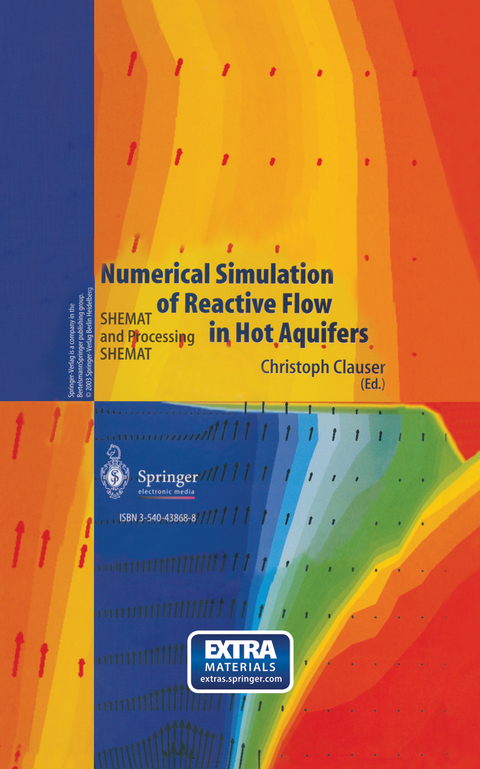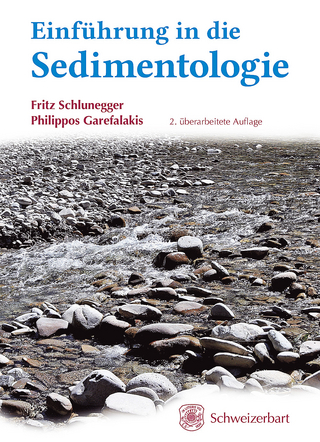
Numerical Simulation of Reactive Flow in Hot Aquifers
Springer Berlin (Verlag)
978-3-540-43868-7 (ISBN)
This product, consisting of a CD-ROM and a book, deals with the numerical simulation of reactive transport in porous media using the simulation package SHEMAT/Processing SHEMAT. SHEMAT (Simulator for HEat and MAss Transport) is an easy-to-use, general-purpose reactive transport simulation code for a wide variety of thermal and hydrogeological problems in two or three dimensions. The book is a richly documented manual for users of this software which discusses in detail the coded physical and chemical equations. Thus, it provides the in-depth background required by those who want to apply the code for solving advanced technical and scientific problems. The enclosed companion CD-ROM contains the software and data for all of the case studies. The software includes user-friendly pre- and post-processors which make it very easy to set up a model, run it and view the results, all from one platform. Therefore, the software is also very suitable for academic or technical "hands-on" courses for simulating flow, transport of heat and mass, and chemical reactions in porous media. You can find a link to the updated software on springer.com .
1 Introduction.- 2 Numerical Simulation of Reactive Flow using SHEMAT.- 2.1 General.- 2.2 Governing Equations.- 2.4 Input / Output.- 2.5 Practical Modeling: Remarks, Explanations and Instructions.- 2.6 Code Verification.- 3 Pre- and Post-Processing with "Processing SHEMAT".- 3.1 What is Processing SHEMAT?.- 3.2 Modeling Environment.- 3.3 Menu System.- 4 Advanced Features.- 4.1 Chemical Equilibrium Speciation for Brines at High Temperatures and Ionic Strength.- 4.2 Fractal Relation Between Porosity and Permeability: Theory and Verification.- 5 Tutorial for "Processing SHEMAT".- 5.1 Introduction.- 5.2 Creating a Fluid Flow, Heat Transfer, and Solute Transport Model.- 5.3 Using the Geochemical Reaction Module.- 5.4 Expanding the Model to Three Dimensions.- 6 Applications.- 6.1 Development of a Preferential Flow Path in an Anhydrite Cemented Sandstone: Numerical Simulation of a Core Flooding Experiment.- 6.2 Modeling Flooding of a Sandstone Core with Reactive Transport and Subsequent Changes in Porosity and Permeability.- 6.3 Injection Well with Reaction Kinetics.- 6.4 Magmatic Intrusions in Long Valley Caldera.- 6.5 Rhine Graben Cross Section.- 6.6 Thermal Transect of Continental Lithosphere in Canada.- 6.7 Waiwera Coastal Geothermal System.- References.
From the reviews:
"The primary audience for this text consists of hydrogeologists and geophysicists. ... It aims to provide a systematic introduction to the software SHEMAT ... . Overall, the material is well presented. The philosophy of the book, to present the necessary mathematical background ... is well thought through. It should be able to fill a dual role of being a user guide and an introduction into the modelling and simulation of flow in hot aquifers." (Ute Mueller, The Australian Geologist, Issue 128, 2003)
| Erscheint lt. Verlag | 29.11.2002 |
|---|---|
| Zusatzinfo | IX, 332 p. 257 illus., 224 illus. in color. With online files/update. |
| Verlagsort | Berlin |
| Sprache | englisch |
| Maße | 155 x 235 mm |
| Gewicht | 635 g |
| Themenwelt | Naturwissenschaften ► Geowissenschaften ► Geologie |
| Naturwissenschaften ► Geowissenschaften ► Geophysik | |
| Naturwissenschaften ► Physik / Astronomie ► Strömungsmechanik | |
| Schlagworte | fluid- and aerodynamics • Geophysics • graphical user interface • Grundwasser • hydrogeology • Model • Modeling • Porous Media • reactive transport • Simulation |
| ISBN-10 | 3-540-43868-8 / 3540438688 |
| ISBN-13 | 978-3-540-43868-7 / 9783540438687 |
| Zustand | Neuware |
| Haben Sie eine Frage zum Produkt? |
aus dem Bereich


